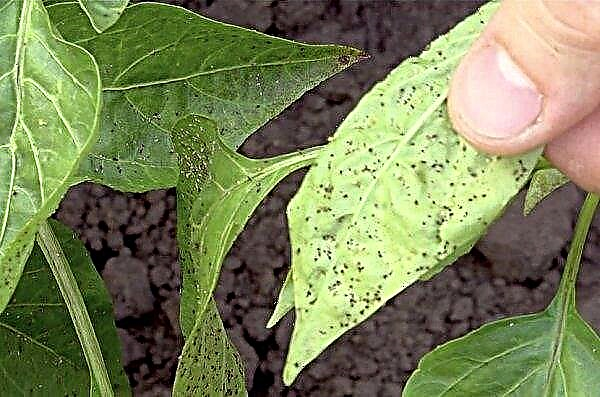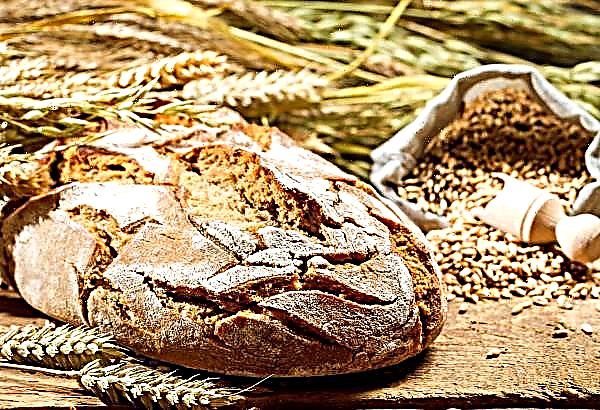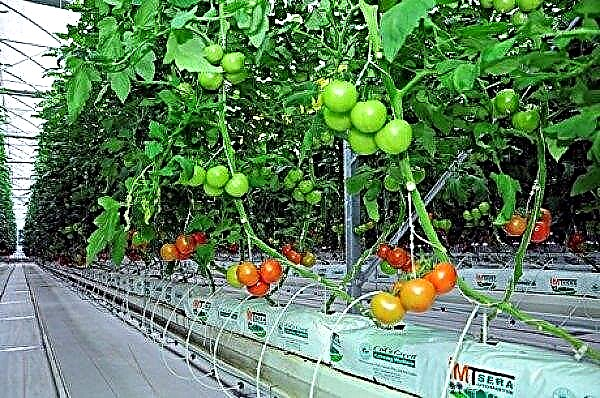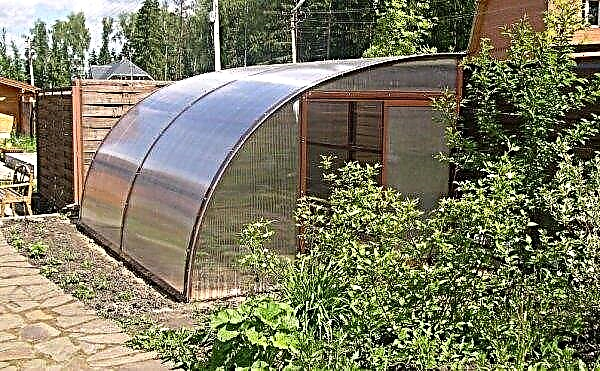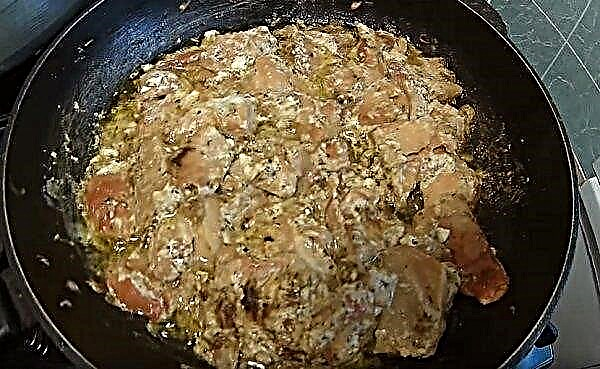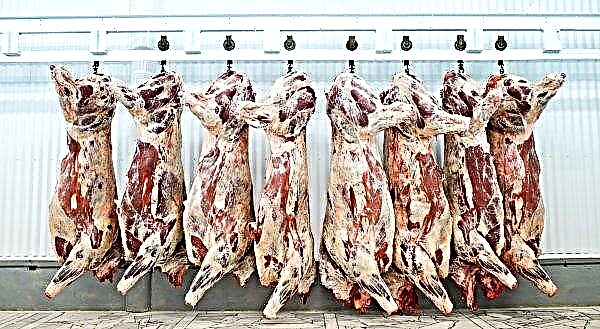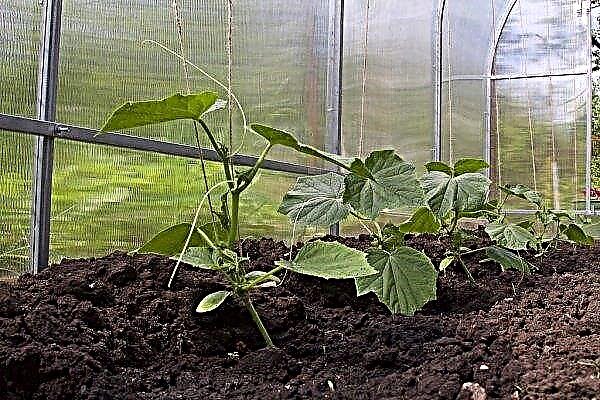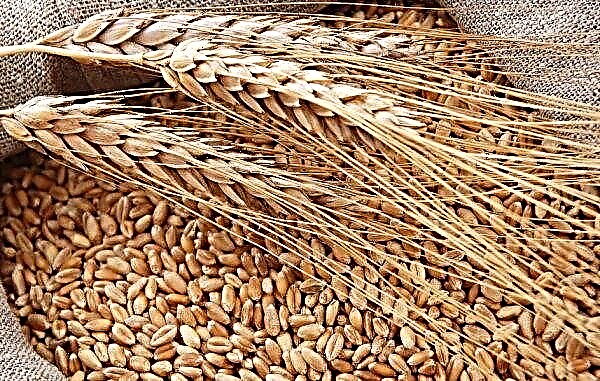Among the variety of rapidly ripening tomato varieties, Siberian precocious is especially popular. Over the long years of cultivation, he established himself well and achieved the well-deserved love of gardeners. The advantages and disadvantages of the variety, as well as how to cultivate tomatoes and what difficulties exist in the care, will be discussed later.
Grade description
You can talk about the Siberian precocious for a long time - this variety is too good.
But the main characteristics are better represented as follows:
- bushes are determinant, compact, 30–95 cm high;
- cultivation method: greenhouse or unprotected soil;
- leaves are medium in size, dark green;
- early ripening variety, ripening period - 114–127 days from the appearance of seedlings;
- immunity - high, well resists many diseases (tobacco mosaic virus, etc.);
- fruit weight - 60–110 g;
- ripe tomatoes: rounded or slightly flattened, slightly ribbed, juicy red;
- 9–11 fruits are formed on the bush;
- the first inflorescence is formed over the 6-8th leaf, the next - in 1-2;
- the number of nests is 5–12, and this indicates the meatiness of the fruit;
- pulp of ripe tomatoes - fragrant, sweet and sour, contains up to 7% solids;
- application - multi-purpose, but, thanks to a large number of dry substances, it is most often used for the manufacture of juices, sauces and mashed potatoes;
- productivity is high, on average 0.9–1.5 kg of fruits are picked from one bush, in the greenhouse the yield reaches 9–10 kg per 1 m², in unprotected soil - 6–8 kg.
Important! To increase the shelf life of tomatoes, one should adhere to such a storage scheme: dry fruits are tightly stacked with the stalks up, and the container is closed with a lid. So you can save tomatoes for a period of 2 months.
Advantages and disadvantages
Siberian precocious knowingly won the love of gardeners.
- Its main advantages are such characteristics:
- high productivity;
- the fruits practically do not crack;
- simplicity of leaving and unpretentiousness to soil properties;
- good transportability;
- the ability to tolerate a short-term decrease in temperature;
- prolonged fruiting;
- resistance to fungal and viral diseases;
- suitable for growing in any climate zone;
- universality of the use of fruits (fresh, mashed potatoes, canning, sauces, juices).

- The variety has practically no drawbacks, but some gardeners note such factors:
- obsolescence of the variety;
- the inability to compete with modern hybrids.
How to grow tomato seedlings yourself
This tomato variety is grown exclusively by seedlings. Therefore, seedlings should be taken care of in advance.
Optimum timing for sowing
Seedlings are always grown under shelter, regardless of whether it is planned to grow tomatoes in a greenhouse environment or outdoors. Seeds are sown in late March or early April (for greenhouses - in late February), 50-60 days before planting in a permanent place.
Did you know? Tomatoes contain the hormone of happiness - serotonin. According to some reports, one fruit eaten is able to cheer up, and regular use reduces the risk of developing oncology.
The soil
Any substrate is suitable for sowing seeds for seedlings, but it is better that it be a sod, humus or peat mixture. The level of acidity should be low.
The soil is recommended to be treated with disinfectants or calcined to get rid of pathogenic microflora.
Capacity for growing
In fact, you can grow seedlings in any container:
- plastic or wooden boxes;
- peat tablets;
- seedling cassettes and trays;
- cardboard or peat glasses;
- special plastic pots for seedlings.

You can also make the container yourself by cutting off a plastic bottle or container for dairy products. Some grow seedlings in eggshells or disposable plastic cups. The last option is not suitable for tomato seedlings.
Seed preparation
Any gardener knows that all tomatoes are heat-loving crops, but the Siberian precocious can tolerate harsh climatic conditions. This property affects the features of agricultural technology.
Before planting, the seed is quenched by placing it in the refrigerator. There, the seeds should be kept for 2 months at a temperature of + 2 ... + 4 ° C. If this fact was missed, the stratification process can be applied. To do this, the soaked seeds are placed in the refrigerator for at least 20 hours, and then placed in a room with a temperature of + 18 ... + 20 ° C.
If this fact was missed, the stratification process can be applied. To do this, the soaked seeds are placed in the refrigerator for at least 20 hours, and then placed in a room with a temperature of + 18 ... + 20 ° C.
Only healthy seeds are suitable for cultivating tomatoes. Before planting, the seed material is soaked in a nutrient solution of wood ash or a growth stimulator (Epin, Immunocytophyte, etc.), and then disinfected in a 1% manganese solution.
If you pre-germinate the seeds, you can increase their germination. For this, the seed is spread on wet gauze and the moisture level is maintained all the time, preventing its excess.
Determinant tomato varieties also include:
Sowing seeds
Sowing material is buried by approximately 1-1.5 cm, several pieces per container, at a distance of 5-10 cm from each other.
Seedling Care
After the seeds are placed in the nutrient mixture, they are covered with a film and put in a dry, warm, well-lit place. As soon as the first seedlings appear, the film is removed and seedlings continue to be grown in sufficient light.
In order for the seedlings to sprout together, they need to provide the optimum temperature - + 23 ... + 25 ° С. After the shoots are a little stronger, this figure can be reduced to + 20 ... + 22 ° C.
Young seedlings need moisture support and top dressing. Water the soil from the spray as the top layer dries.
When the first 2-3 leaves appear, the seedlings dive into separate containers to form a good root system. Only large and strong seedlings are transplanted.
Seedling hardening
Although Siberian precocious tolerates short-term temperature drops, before planting in a permanent place, seedlings need to be hardened.
10-14 days before the transfer to the greenhouse or unprotected soil, seedlings begin to expose to fresh air, leaving them in the shade (porch, balcony, etc.). The procedure time is gradually increasing. At night, the tomatoes are cleaned in the room. Then the seedlings are accustomed to the sun's rays, leaving it first in partial shade, and then - briefly in the open.
3-4 days before planting in the ground, if the temperature is at least + 12 ° C, seedlings can be left on the street.Important! Immediately leave the seedlings in the sun can not, they can get sunburn.
When to plant seedlings in a permanent place
In the place where the tomatoes will grow, seedlings aged 55-65 days in unprotected soil are placed in the second half of May or early June (depending on the weather). Favorable for normal development will be slightly acidic soil. It is useful to add superphosphate to the pits (10 g per hole).
The distance between the holes should be at least 50 cm, and between the rows - at least 30–35 cm.
The landing scheme itself looks like this:
- Wells 20-30 cm deep are prepared.
- Warm water is poured into each well.
- Seedlings are placed in the pit, covered with earth and slightly tamped.
- Landings are generously watered.
After this, the seedlings are left for a week to give her the opportunity to acclimatize. And only then they start leaving.
How to care for tomatoes in the open ground
Tomatoes need standard care: watering, weeding, top dressing, loosening the soil.
Watering
It is better to moisten the soil in the evening hours when the sun loses its activity. Use warm, rain or settled water. When watering, make sure that water does not fall on the green parts of tomatoes.
Immediately after transplanting to a permanent place, tomatoes are watered as necessary. Typically, the frequency of irrigation is once every 5-6 days. During the ripening period of tomato irrigation is reduced. When the soil is waterlogged, rot and fungal diseases appear.
Important! When growing in greenhouse conditions, it is necessary to monitor the level of humidity and prevent its increase. For this purpose, the greenhouse is aired daily.
Top dressing
For the entire growing season, tomatoes are fertilized 3-4 times. The first fertilizer is applied 7-10 days after planting. Organic food (mullein, chicken or quail droppings), nitrophosphate and various complex additives are used as top dressing.
To avoid burns, top dressing is applied after moistening the soil. It is also worth considering that an overabundance of organic matter leads to increased growth of the bush and foliage, and this negatively affects the fruit setting.
Stepson
Siberian precocious refers to varieties for which pinching is not a prerequisite. Indeed, in these tomatoes, the main branch ends with a fruit brush.
At the same time, pinching can increase fruit production and affect the yield of a variety. The first procedure is carried out 2-3 weeks after transplantation to a permanent place. To do this, remove all the side stepsons and leave only 2-3 to form new stems. In the future, the emergence of new stepsons is monitored every week.
Did you know? In the 19th century, tomatoes were planted in Europe as houseplants, in England they were considered a flower and planted in greenhouses, and in France they were used as decor for decorating arbors.
Soil care
After watering and top dressing, the main concern is soil treatment. It should be periodically loosened, cleaned of weeds and spud. Loosening is performed after watering or past rains.
For additional plant protection, it is recommended to mulch the soil 10-14 days after planting.
The following materials are used as mulch, the layer of which should be no thinner than 5 cm:
Tying bushes
Siberian precocious does not differ in the height of the bush, but still needs the formation and tying of the stem. This procedure allows you to increase crop yield, provide uniform light to the plant and protect against bush breakage. Since the stems do not grow very tall, an additional support is not necessary. A bush is formed in 2-3 stems, while the side shoots are simultaneously removed. The foliage above the brush and under it is cut off.
As you can see, growing Siberian ripe tomatoes is not at all difficult. One needs only to make a little effort and pay attention to the culture: water on time, spud and follow other simple care recommendations.

